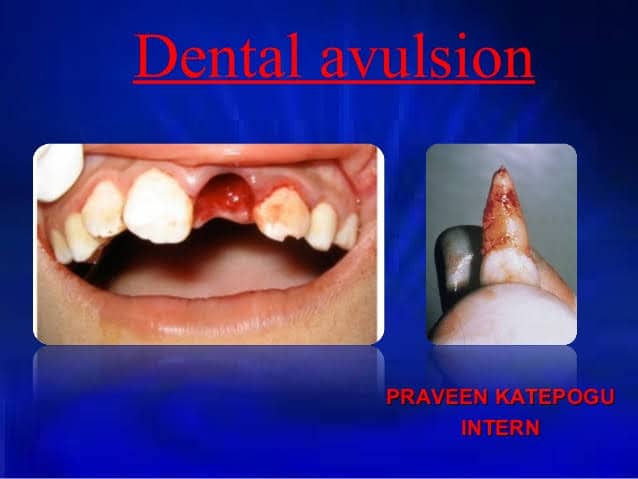To a layman, avulsed tooth simply means a tooth that has fallen out from its position in the socket. The treatment of avulsed tooth is called replantation. Replantation is the replacement in its socket of a tooth that has been avulsed.
The tooth usually becomes firm within a few weeks, but the long-term outcome is depended on many factors. The outcome is most favorable if the tooth is replanted within half an hour of avulsion and if, before replantation, the periodontal tissues attached to the root are kept moist and not disturbed.
Under ideal conditions, normal healing occurs and the tooth remains healthy. Unfortunately, the majority of replanted teeth show progressive root resorption, and the tooth may be lost within a few months or it may survive for several years.
Despite its uncertain outcome replantation of an avulsed permanent tooth is usually just justified of the factors determining the prognosis is the length of time that the tooth remains out of the mouth. Therefore, an individual should be able to replant the tooth immediately (assuming there is no unfavorable medical history).
Treatment for managing knock out tooth:
- Hold the tooth by its crown, not by its root.
- Remove any particles of dirt that may be present on the root surface by rinsing with cold water for a few seconds only or by dabbing very gently with a wet tissue (wetted preferably with saliva rather than with water).
- Replant the tooth carefully in its socket (ensure to differentiate the surfaces i. e sides of the teeth).
- Ask the patient to keep it in place by biting on a clean gauze/cotton wool
- Visit the nearest dental clinic as quickly as possible.
If the patient is unwilling or unable to carry out these instructions, the action must be given on how to take the tooth to the nearest dental clinic. This is a very important factor determining the prognosis because it is essential to maintain the vitality of the tissues. attached to the root surface. The ideal method is for the tooth to be placed in the patient’s mouth.
IF the patient is unwilling or unable to do this, he or she should place the tooth in milk, which has been shown to be a satisfactory medium. If milk is not available, the tooth should be placed in a clean tissue or handkerchief moistened with the patient’s saliva. Report to the nearest dental clinic where all the appropriate treatment will be carried out.
How long does it take an avulsed tooth to heal
It depends. If your dentist detects that the bone around your tooth was not fractured, the root usually will reattach firmly to the bone in about three to four weeks. But if it has been severely damaged it may require six to eight weeks for the area to repair itself.
After three to six months you can go to your dentist to examine again if there is an infection. If there is no any dental problem you can visit Your dentist yearly for the next three years to ensure your tooth are intact and successfully re-implanted.

Isreal olabanji a dental assistant and public health professionals and has years of experience in assisting the dentist with all sorts of dental issues.
We regularly post timely and trustworthy medical information and news on Fitness, Dental care, Recipes, Child health, obstetrics, and more.


